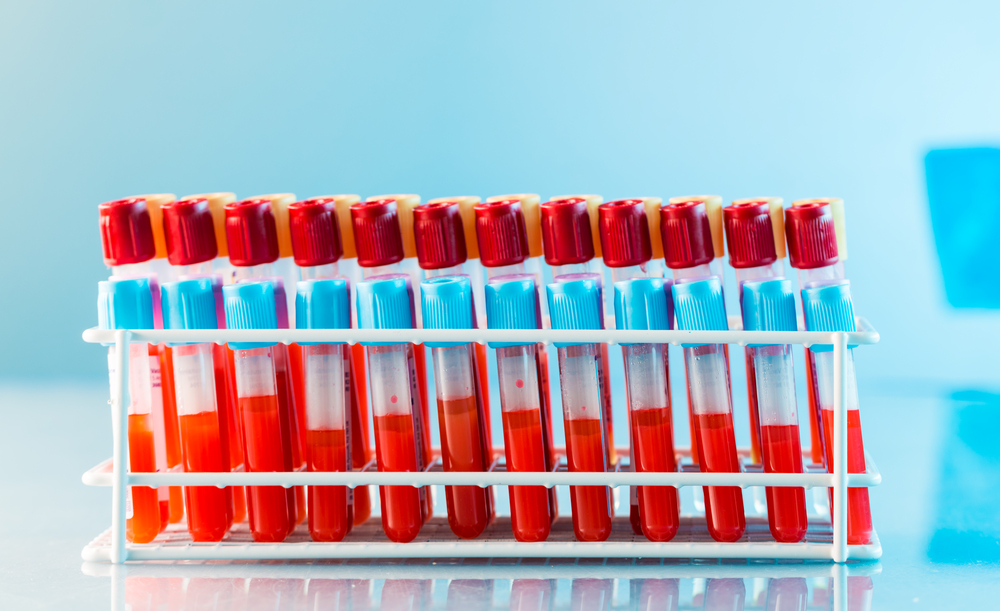Ratio Between FVIII and Von Willebrand Factor Predicts Relapse in Patients with Acquired Hemophilia A, Study Reveals

The ratio between the blood clotting protein factor VIII (FVIII) and the von Willebrand factor (VWF) may be a reliable biomarker of recovery and relapse in patients with acquired hemophilia A (AHA), a study suggests.
The research, “The factor VIII:C/VWF:Ag ratio as a useful tool to predict relapse in patients with acquired haemophilia A: A retrospective cohort study,” was published in the journal Haemophilia.
The definition of complete remission in AHA, a rare bleeding disorder caused by autoantibodies that inhibit FVIII, still lacks consensus. In turn, relapse is defined as the recurrence of inhibitors of FVIII and low FVIII levels after reaching complete remission.
Factor VIII is closely associated with the protein VWF, which helps platelets adhere to sites of blood vessel damage and protects FVIII in the circulation. The FVIII/W ratio — between FVIII activity (FVIII:C) and the VWF antigen — is normally close to 1.0, but, in patients with inherited HA or von Willebrand disease (VWD) type 2N, it is lower than 0.5 due to the decrease in FVIII.
Because “[t]he usefulness of the FVIII/W ratio is not described in previous publications about AHA,” the research team from France assessed FVIII/W ratio in the diagnosis and monitoring of AHA, focusing on whether this ratio may effectively predict early AHA relapse.
Sixty-four AHA patients were included, all diagnosed between 2000 and 2015 at the Nantes and Toulouse University Hospitals. Their median age at diagnosis was 78.9 years, most were men (63%), and only five (8%) had no bleeding symptoms. Thirty patients (47%) had bleeding in multiple sites.
The most common manifestations at diagnosis were subcutaneous (under-the-skin) and muscular hematoma (swelling from blood leakage) in 47 patients (73%). The most common underlying disorders were cancer (16%) and autoimmune disorders (9%). In 30 patients (47%), AHA was considered idiopathic (with no known cause).
Only four (6%) patients did not receive any immunosuppressant. Twenty-nine (45%) received stand-alone treatment with corticosteroids, 18 (28%) were treated with corticosteroids and rituximab — Rituxan (Genentech) in the U.S. and Mabthera (Roche) in Europe — and 13 (20%) with corticosteroids and cyclophosphamide.
The median FVIII/W ratio, assessed in 46 patients, was 0.01, significantly lower than in 40 healthy subjects (1.13), 26 patients with VWD type 2N (0.25), and 39 patients with inherited hemophilia (0.38).
The median follow-up duration was 22.9 months. Fifty-five patients (86%) achieved complete remission, but 11 of these patients (20%) relapsed. Time to relapse after achieving complete remission was 8.9 months.
The FVIII/W ratio was the last biological parameter to return to normal after complete remission, after a median of seven months. In four of the five patients experiencing relapse and with thorough clinical and laboratory results, a decrease in the FVIII/W ratio was the first laboratory finding suggesting relapse.
No patient showed bleeding between ratio decrease and the subsequent clinical relapse, “indicating that close monitoring of this parameter should be very useful for pre-emptive therapy,” the researchers commented.
All patients who did not relapse (22 patients) showed regular increases in the analyzed ratio until normalization, with only one patient later showing a ratio inferior to the lower normal value (0.66). In contrast, all of those who relapsed noted either no normalization (one patient), or a secondary decrease to an abnormal value (four cases).
Overall, “these data suggest that the FVIII/W ratio could be considered a sensitive biological marker to predict recovery and/or relapse in AHA,” the team wrote.
Cautioning that these findings need to be confirmed in larger groups, the researchers “propose that complete remission could be considered upon FVIII:C normalization, inhibitor disappearance but mostly FVIII/W ratio normalization.”






